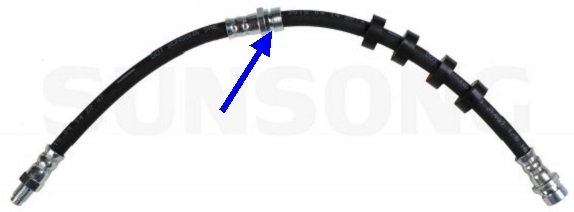This is an unfortunate coincidence. The causes of dragging brakes can't be seen with the typical visual inspection, even when the wheels are removed. The most common cause is a constricted rubber flex hose, and that almost always happens to the front hoses. That's shown in the photo below. The blue arrow is pointing to a bracket that's crimped around the hose. Rust builds up inside the barrel causing the hose to become constricted. You can force brake fluid through the restriction to apply the brake, but that fluid can't return to the reservoir. Being trapped under pressure, it keeps that brake applied. The heat build-up migrates into the brake fluid causing it to expand and apply that brake even harder. At its worst, you'll see and smell smoke.
The way to prove this is to open the hydraulic system at various places to see where you can release the trapped brake fluid. I like to park on a slight incline, shift to neutral when the brake is locked, and place a block about a foot downhill of one of the tires so you don't look funny chasing after the vehicle. The easiest place to start is by loosening the steel lines coming out of the master cylinder. Hope that this does not let the brake release. If it does, it's due to brake fluid being contaminated with a petroleum product like engine oil or power steering fluid. That is a very expensive repair.
More commonly you'll have to crawl under the vehicle to open the bleeder screw on the caliper. If it's rusted tight, you can also loosen the brake hose where it bolts to the caliper. If the brake releases now, suspect that rubber flex hose.
Let me know what you find up to this point.
Image (Click to make bigger)
Tuesday, April 12th, 2022 AT 9:10 PM



